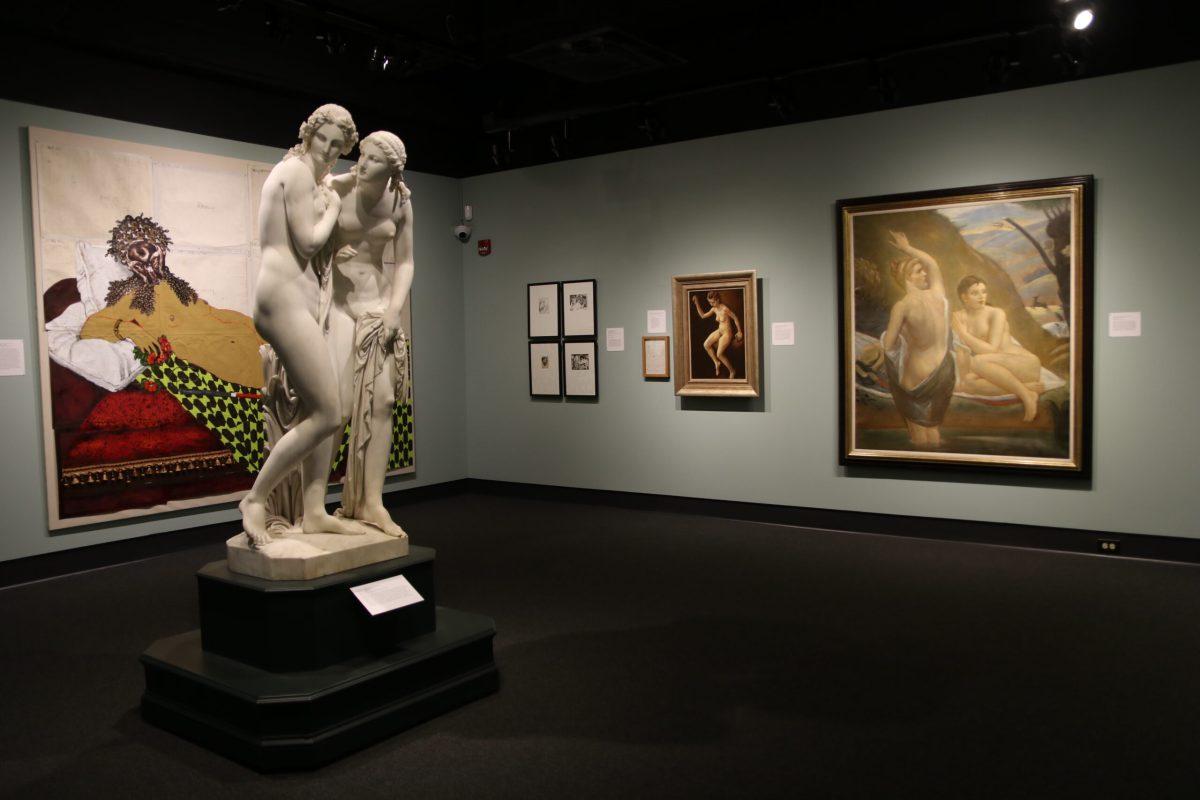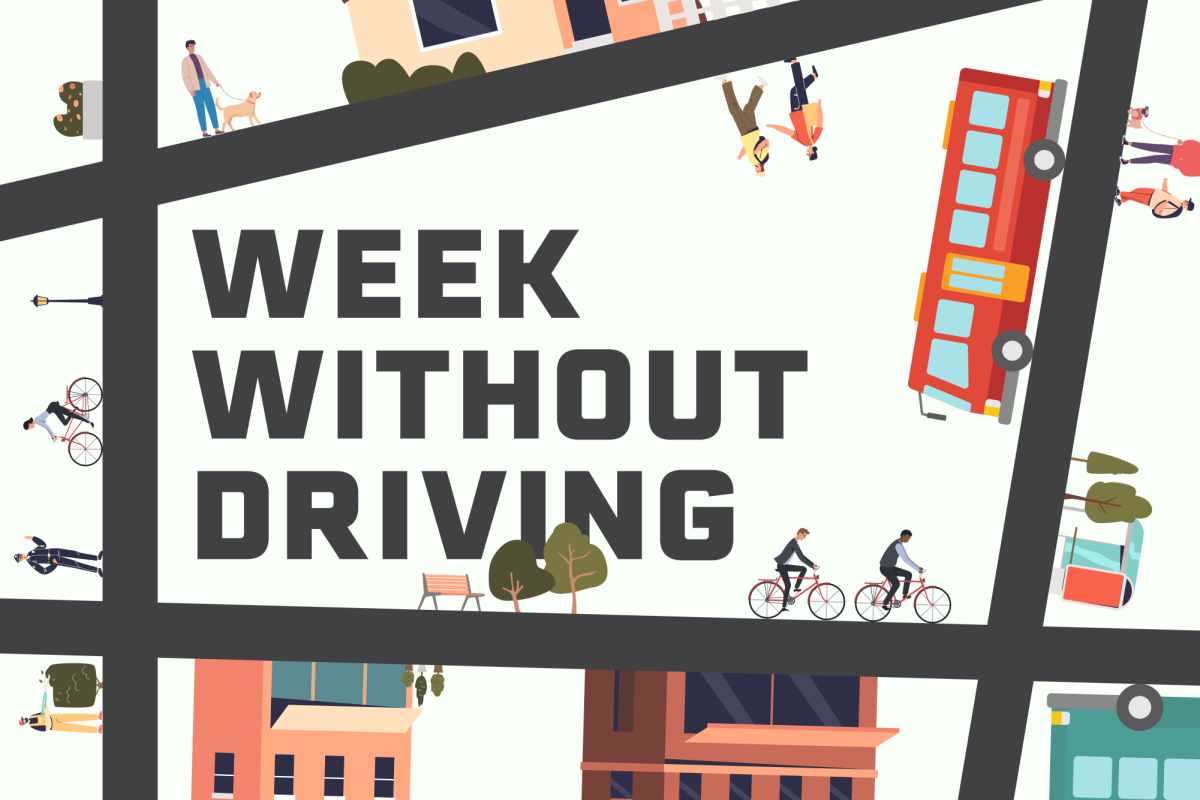“Objectified: The Female Form and the Male Gaze” is MU’s Museum of Art and Archaeology’s newest exhibition. Put together by Alisa McCusker, the museum’s associate curator of European and American art, the show approaches how the female body was and still is depicted in art.
After a curator-led tour through the showcase on Feb. 20, McCusker discussed what goes behind putting together an exhibition and the fine points of “Objectified”:
Q: How was the process of choosing the artworks?
A: We have such a rich collection, there was so much to choose from. It was interesting how the more I looked at the collection, the more I realized how many examples touch on these issues that are coming up today. I get this question about the process a lot, and it’s all really organic.
Q: There is only one work by a female artist in this exhibition, “Blind Venus” by Katherine Sherwood. How did you come to this decision?
A: In part, it’s the very nature of the collection. We only had one or two more works that depicted the female nude also by female artists, and one of them is already being displayed in the museum. This one work by a woman artist in the exhibit is critical of a lot of these issues. It addresses idealized beauty, the history of western art and its canon of portrait. It addresses the representation of female artists.
Q: How did you go about the sensitive aspects of objectification that are depicted in works such as “The Rape of Proserpina” by Johann Jacob Frey?
A: This is where these relevant [“Me Too”] articles that are coming out get difficult for me and a lot of people. It can trigger personal traumas. The examples that we included are set in this tradition of looking back in antiquity. In some ways, it’s almost easier to think of these issues from the perspectives of these stories or legends.
Q: What brought you to the objectification theme?
A: It really started with the “Me Too” movement. No matter what you think of a particular political issue, it’s a brave action to stand up for something that you think is an injustice. I was really moved by these women that are coming out and talking about powerful people, and that in the process, could have been ruining their own careers and reputations. So I thought, “What would it be like if we did a show on the female nude?” Because when we’re talking about European and American art, we’re talking about a majority of male artists and male patrons too.
Q: How did you connect the “Me Too” movement to art history?
A: It was related to the ways “Me Too” has manifested itself in the art world. There have been accusations of contemporary artists, such as musicians and Hollywood directors. Way back in college, I took a course on feminist perspectives in art history, so after completing a masters and Ph.D., I became familiar with using a feminist lens to interpret our history. So yes, movie posters are objectifying women, but how is that surprising? Art history provides a form for students to learn how to look at images critically. And also how do museums deal with artists like Picasso, who we know from biographies and testimonies that he did not have a high opinion of women and did not treat them very well? So we keep holding these artists up as geniuses.
Museums are still trying to figure out how do you hang a work from Picasso depicting a brothel knowing what we know now? it was part of a culture that commodified and took advantage of the objectification of women. We’re still trying to figure it out.
Q: Do you think the way art depicts women is changing?
A: I think it is changing. I think that us pointing out these very real facts about Picasso’s life [doesn’t] make him any less of a great artist. He was still a phenomenally prolific artist, who worked in an incredible variety of media, from painting to sculpture and even architecture. He was an innovator in so many ways. I think what this does is that it makes him more human, and that’s what we need to keep reminding ourselves. He was a human, a product of his generation, his culture and his time. I think that to acknowledge that and try to analyze his work in that way makes the conversation richer, as opposed to just say that he was brilliant. Who was he? What did he do? Why?
Q: So how should we see these artists now?
A: That’s what we’re trying to ask with this. How do we deal with this? This question has come up in a lot of articles and conversations on the “Me Too” movement. For example, in Hollywood. How do we respond to that? Film critic A.O. Scott who writes for The New York Times actually wrote about this in an article he titled “My Woody Allen Problem,” but how do we appreciate the art? I don’t have an answer, and I don’t think anyone does.
Q: How are the responses for the exhibition?
A: Today we had a great turn out and that was very encouraging. Because of the weather, we haven’t officially had an opening reception for this exhibition yet. But so far, it’s been very positive. I’ve had both men and women say that this needs to be addressed and we need to keep the conversation going.
“Objectified: The Female Form and the Male Gaze” will be at MU’s Museum of Art and Archeology until July 7 at Mizzou North.
_Edited by Janae McKenzie | [email protected]_








